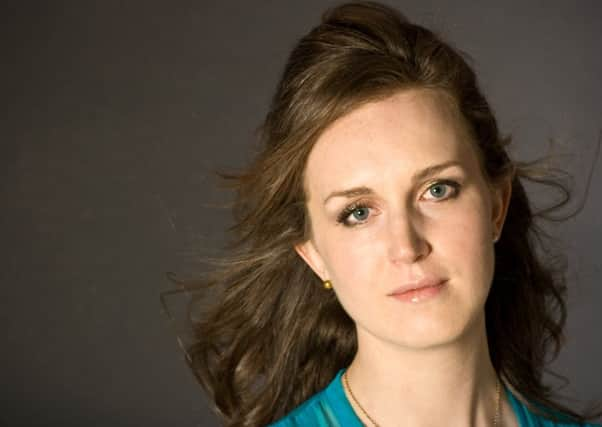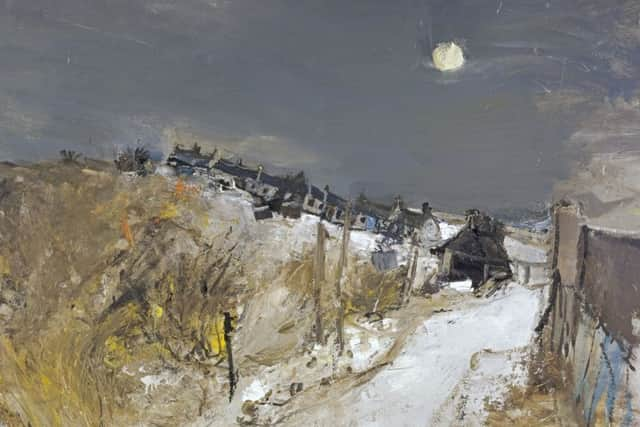How artist Joan Eardley inspired Helen Grime to find new sound


That’s evident in the strikingly austere landscapes she painted and relentlessly repainted of Catterline, the Aberdeenshire fishing village where she kept a cottage, and in the earthy truthfulness of her portraits of poor Glasgow children, both of which dominated her output.
And it’s one of the key reasons, other than having grown up in the north east of Scotland herself, and been aware of Eardley’s work from a young age, that composer Helen Grime, when asked by the BBC to undertake a double orchestral commission for this year’s BBC Proms, decided to base both works – one for the BBC Scottish Symphony Orchestra, the other for the National Youth Orchestra of Scotland – on two of Eardley’s Catterline paintings.
Advertisement
Hide AdAdvertisement
Hide Ad“I liked the idea she was out in the open doing these paintings, persistently trying to get closer to what she was trying to achieve, to the extent that if the sky shifted, she’d move quickly to a fresh canvass to capture the fast changing light,” says the 35-year-old composer. “That dogged resilience really struck me.”


The works that sparked Grime’s inspiration, and which are being unveiled separately in two London concerts this weekend as the Two Eardley Pictures, are Catterline in Winter and Snow. The paintings that spoke to Grime are Eardley at her most vivid and dramatic. And the fact each has a distinctiveness (the luminescent red in Snow against the leaden grey of Cattaline in Winter) as well as unity of style (the bold shard-like strokes of grey), gave the composer both the freedom and cohesion she was after.
What transpired, then, were two orchestral landscapes that could be played separately, but which had the potential to coexist as a seamless entity. “I was interested in using exactly the same base material for each piece, but hearing it in different ways,” she explains. Catterline in Winter is “darker and slower”; Snow is “brighter and faster”. She sees the latter, written for NYOS – in which Grimes was once an oboist – as the opening piece. “It ends quite darkly, thus providing a natural link into Catterline.”
But how does a composer turn a painting into a piece of music? Has Grimes simply created a more or less direct musical translation of the visual, as Mussorgsky famously did of Hartmann’s paintings in his Pictures at an Exhibition? Or has she adopted the more abstract impressionistic response of, say, Debussy?
“For me, the paintings are simply a starting point,” she says. “I took certain basic ideas from them. In Catterline in Winter, you know how in the afternoon you have that wintry sun, that completely leaden sky? Well the piece is essentially dark, but these repeated moments keep coming back, much brighter, in a higher register, it’s like you’re constantly trying to get away from this heaviness.”


And Snow? “There’s a lot of red in it, and a lot of striking paint strokes as well, but the musical response to that goes much further than simply translating the colours or brush strokes.”
These pieces are a statement of the nostalgia Grime feels for the part of Scotland she grew up in, and the growing hankering she has to return to it one day.
Advertisement
Hide AdAdvertisement
Hide AdAt the heart of the project is a bothy ballad – The Scranky Black Farmer – that Grime uses as the technical foundation for both pieces. “I found this melody and really liked it,” she explains. “I don’t use it in a recognisable way – you only hear the full melody once. Instead, I’ve given it a rich, harmonic feel.”
Has she made any allowances for the fact a youth orchestra will premiere Snow tomorrow, while Catterline in Winter (premiered last night by the BBC SSO) is written for a professional orchestra? “I’ve made a kind of allowance,” she says. Faster music is easier to play if it’s rhythmically straightforward, but technically Snow is still really quite difficult. It will sound virtuosic.”
And will her nostalgia for Scotland result in her returning to live here some day? “My husband is a composer [Huw Watkins], and we have big commitments which make staying in London more sensible.” But she isn’t ruling it out. ■
• Snow, the second of Helen Grime’s Two Eardley Pictures, is premiered by NYOS at the BBC Proms tomorrow afternoon and broadcast live on BBC Radio 3. The BBC SSO performs Catterline in Winter on 22 September and Snow on 10 December, both at the City Halls in Glasgow, as part of its winter season.